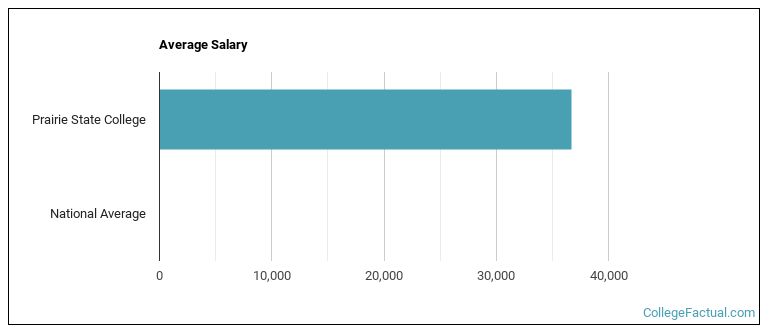 by our College Data Analytics Team
by our College Data Analytics TeamExplore the best ranked schools for the programs you are most interested in.
Prairie State College is ranked #1,566 out of 2,152 schools in the nation for overall quality on College Factual's 2025 Best Colleges list.
Prairie State College is also ranked #66 out of 85 schools in Illinois.
Returning adults and other non-traditional students may appreciate the fact that Prairie State College has an open admissions policy. This means that you'll only have to submit basic materials, which may include proof that you completed high school or an equivalent program.
At Prairie State College, the student to faculty ratio is an excellent 10 to 1. That's much better than the national average of 15 to 1. This indicates that many classes will probably be small, and students will have ample opportunites to work closely with their professors and classmates.
When estimating how much access students will have to their teachers, some people like to look at what percentage of faculty members are full time. This is because part-time teachers may not have as much time to spend on campus as their full-time counterparts.
The full-time faculty percentage at Prairie State College is 35%. This is lower than the national average of 47%.
The freshmen retention rate is a sign of how many full-time students like a college or university well enough to come back for their sophomore year. At Prairie State College this rate is 52%, which is a bit lower than the national average of 68%.
During the 2017-2018 academic year, there were 2,716 undergraduates at Prairie State College with 872 being full-time and 1,844 being part-time.
| $0-30 K | $30K-48K | $48-75 | $75-110K | $110K + |
|---|---|---|---|---|
| $2,625 | $2,252 | $6,677 | $3,767 | $11,770 |
The net price is calculated by adding tuition, room, board and other costs and subtracting financial aid.Note that the net price is typically less than the published for a school. For more information on the sticker price of Prairie State College, see our tuition and fees and room and board pages.
While almost two-thirds of students nationwide take out loans to pay for college, the percentage may be quite different for the school you plan on attending. At Prairie State College, approximately 5% of students took out student loans averaging $5,388 a year. That adds up to $21,552 over four years for those students.
The student loan default rate at Prairie State College is 1.0%. This is significantly lower than the national default rate of 10.1%, which is a good sign that you'll be able to pay back your student loans.

See which majors at Prairie State College make the most money.
Get more details about the location of Prairie State College.

Contact details for Prairie State College are given below.
| Contact Details | |
|---|---|
| Address: | 202 South Halsted Street, Chicago Heights, IL 60411-8226 |
| Phone: | 708-709-3500 |
| Website: | prairiestate.edu/ |
| Most Popular Majors | Bachelor’s Degrees | Average Salary of Graduates |
|---|---|---|
| Liberal Arts General Studies | 191 | NA |
| Practical Nursing & Nursing Assistants | 88 | NA |
| Allied Health Professions | 56 | NA |
| Dental Support Services | 41 | NA |
| Fire Protection | 38 | NA |
| Allied Health & Medical Assisting Services | 35 | NA |
| Information Technology | 24 | NA |
| Biological & Physical Science | 15 | NA |
| Woodworking | 15 | NA |
| Computer Software & Applications | 13 | NA |
Online courses area a great option for busy, working students as well as for those who have scheduling conflicts and want to study on their own time. As time goes by, expect to see more and more online learning options become available.
In 2022-2023, 1,351 students took at least one online class at Prairie State College. This is a decrease from the 1,643 students who took online classes the previous year.
| Year | Took at Least One Online Class | Took All Classes Online |
|---|---|---|
| 2022-2023 | 1,351 | 517 |
| 2021-2022 | 1,643 | 695 |
| 2020-2021 | 2,166 | 1,253 |
| 2018-2019 | 841 | 230 |
Footnotes
*The racial-ethnic minorities count is calculated by taking the total number of students and subtracting white students, international students, and students whose race/ethnicity was unknown. This number is then divided by the total number of students at the school to obtain the racial-ethnic minorities percentage.
References
More about our data sources and methodologies.